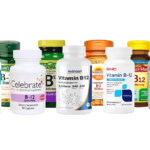Lack Of Vitamin D Increases The Severity of Psoriasis Symptoms – Study

A recent study conducted by researchers from Brown University has shed light on a potential correlation between vitamin D deficiency and the severity of psoriasis, a common skin condition that affects millions of people in the United States alone. The researchers examined nearly 500 cases of psoriasis from the National Health and Nutrition Examination Survey (NHANES) and compared the extent of psoriasis-affected body surface with the levels of vitamin D in the participants’ blood samples.
Upon analyzing the data and accounting for lifestyle factors such as smoking, the researchers discovered a significant association between lower vitamin D levels or vitamin D deficiency and more severe psoriasis symptoms. Interestingly, individuals with the least amount of affected body surface had the highest average vitamin D levels, whereas those with the greatest affected area exhibited the lowest average levels of vitamin D.
These findings have potential implications for the management of psoriasis, as the researchers suggest that individuals with the condition may improve their symptoms by increasing their vitamin D intake through diet and supplements. While topical synthetic vitamin D creams are emerging as new therapies for psoriasis, dietary sources and oral vitamin D supplementation may offer additional benefits to patients. It is essential to note that vitamin D toxicity is rare but, as with any dietary changes, individuals should consult with their healthcare providers before starting vitamin D supplements to ensure safety and appropriate dosing.
The study’s results were presented at the conference of the American Society for Nutrition (ASN) in Boston, and they provide valuable insights into the potential role of vitamin D in managing psoriasis severity. As researchers continue to explore the link between vitamin D and psoriasis, it may open up new avenues for non-prescription interventions that could complement existing treatment options for this challenging skin condition.





